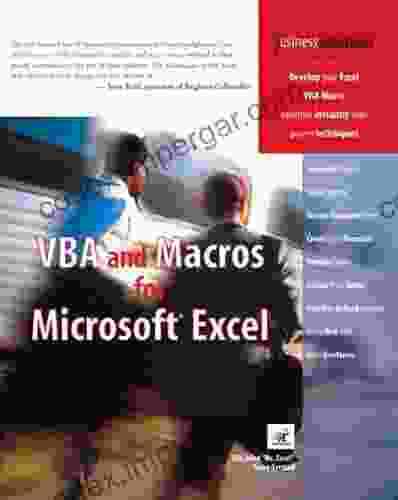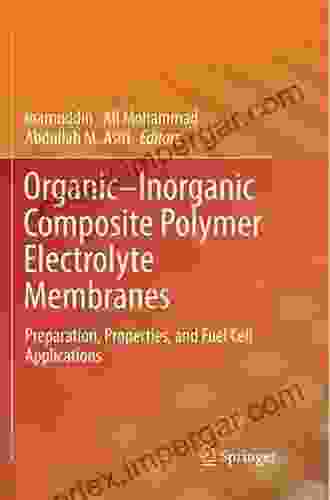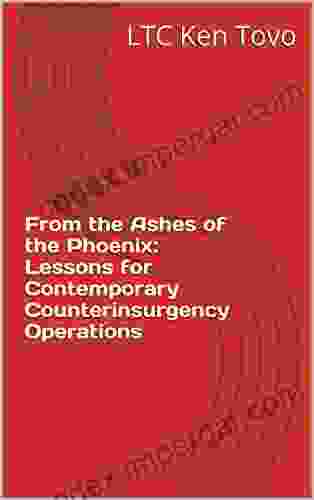Preparation, Properties, and Fuel Cell Applications of Transition Metal Chalcogenides: A Comprehensive Guide for Researchers and Engineers

Transition metal chalcogenides (TMCs) are a group of materials that have attracted considerable attention in recent years due to their potential applications in fuel cells. Fuel cells are electrochemical devices that convert the chemical energy of a fuel into electrical energy. They are considered to be a promising alternative to fossil fuels because they are clean, efficient, and sustainable.
5 out of 5
| Language | : | English |
| File size | : | 13098 KB |
| Text-to-Speech | : | Enabled |
| Screen Reader | : | Supported |
| Enhanced typesetting | : | Enabled |
| Print length | : | 741 pages |
| X-Ray for textbooks | : | Enabled |
| Dimensions | : | 7.87 x 5.51 x 1.57 inches |
TMCs are a class of materials that are composed of a transition metal and a chalcogenide. Transition metals are elements that are located in the d-block of the periodic table, while chalcogenides are elements that are located in the p-block of the periodic table. TMCs have a wide range of properties that make them well-suited for use in fuel cells. For example, they are typically good electrical conductors, they are resistant to corrosion, and they have a high surface area.
The preparation of TMCs is a complex process that involves several steps. The first step is to synthesize the starting materials. The starting materials are typically a metal salt and a chalcogenide source. The metal salt and the chalcogenide source are then reacted together in a high-temperature furnace. The resulting product is a TMC powder.
The properties of TMCs depend on their composition and their morphology. The composition of a TMC is determined by the ratio of the transition metal to the chalcogenide. The morphology of a TMC is determined by the size and shape of the particles. The properties of TMCs can be tailored by controlling their composition and their morphology.
TMCs have a wide range of applications in fuel cells. They can be used as electrocatalysts, as electrode materials, and as electrolyte materials. Electrocatalysts are materials that accelerate the rate of electrochemical reactions. Electrode materials are materials that conduct electricity and collect current. Electrolyte materials are materials that allow ions to pass through them.
The development of TMCs for fuel cell applications is a rapidly growing field of research. There is still much that is not known about these materials, but their potential is enormous. TMCs are a promising class of materials for fuel cells, and they are likely to play a major role in the development of clean, efficient, and sustainable energy technologies.
Table of Contents
- Preparation of Transition Metal Chalcogenides
- Properties of Transition Metal Chalcogenides
- Fuel Cell Applications of Transition Metal Chalcogenides
References
- Park, J.-H., Kim, I., & Kang, S.-W. (2016). Transition metal chalcogenides for hydrogen evolution reaction in acidic media: A review. Applied Catalysis B: Environmental, 181, 255-265.
- Li, Y., & Chen, H. (2016). Transition metal chalcogenides for electrochemical water splitting: A review. Energy & Environmental Science, 9(8),2447-2462.
- Wu, H., & Jin, S. (2017). Transition metal chalcogenides for electrocatalytic hydrogen evolution reaction. Nano Research, 10(9),2993-3023.
5 out of 5
| Language | : | English |
| File size | : | 13098 KB |
| Text-to-Speech | : | Enabled |
| Screen Reader | : | Supported |
| Enhanced typesetting | : | Enabled |
| Print length | : | 741 pages |
| X-Ray for textbooks | : | Enabled |
| Dimensions | : | 7.87 x 5.51 x 1.57 inches |
Do you want to contribute by writing guest posts on this blog?
Please contact us and send us a resume of previous articles that you have written.
 Book
Book Novel
Novel Page
Page Chapter
Chapter Text
Text Story
Story Genre
Genre Reader
Reader Library
Library Paperback
Paperback E-book
E-book Magazine
Magazine Newspaper
Newspaper Paragraph
Paragraph Sentence
Sentence Bookmark
Bookmark Shelf
Shelf Glossary
Glossary Bibliography
Bibliography Foreword
Foreword Preface
Preface Synopsis
Synopsis Annotation
Annotation Footnote
Footnote Manuscript
Manuscript Scroll
Scroll Codex
Codex Tome
Tome Bestseller
Bestseller Classics
Classics Library card
Library card Narrative
Narrative Biography
Biography Autobiography
Autobiography Memoir
Memoir Reference
Reference Encyclopedia
Encyclopedia Brian A Hall
Brian A Hall Bruce Mccomiskey
Bruce Mccomiskey Lane Shefter Bishop
Lane Shefter Bishop Brian Grant
Brian Grant Brian Moynahan
Brian Moynahan Brian Fried
Brian Fried Patrick R Murray
Patrick R Murray Brian Cohen
Brian Cohen James Fryer
James Fryer Igor A Razumovsky
Igor A Razumovsky Brian Matthew Jordan
Brian Matthew Jordan Buddy Guy
Buddy Guy C J Benton
C J Benton Gordon Kerr
Gordon Kerr Bobby Bones
Bobby Bones Bonnie Ruberg
Bonnie Ruberg Bryan Edward Stone
Bryan Edward Stone Deepak Devaraj
Deepak Devaraj Brad Bowins
Brad Bowins C J Pike
C J Pike
Light bulbAdvertise smarter! Our strategic ad space ensures maximum exposure. Reserve your spot today!

 Bernard PowellUnveiling Healthy Dietary Options: Your Comprehensive Guide to Keto, Paleo,...
Bernard PowellUnveiling Healthy Dietary Options: Your Comprehensive Guide to Keto, Paleo,...
 Howard PowellTravels Through Aegean Turkey: A Timeless Treasure from Henry Fanshawe Tozer
Howard PowellTravels Through Aegean Turkey: A Timeless Treasure from Henry Fanshawe Tozer Nathaniel PowellFollow ·7.5k
Nathaniel PowellFollow ·7.5k Dallas TurnerFollow ·8.7k
Dallas TurnerFollow ·8.7k Liam WardFollow ·2.4k
Liam WardFollow ·2.4k Wade CoxFollow ·7.5k
Wade CoxFollow ·7.5k Adrian WardFollow ·9.2k
Adrian WardFollow ·9.2k Jim CoxFollow ·9.3k
Jim CoxFollow ·9.3k Greg FosterFollow ·5.8k
Greg FosterFollow ·5.8k Phil FosterFollow ·3k
Phil FosterFollow ·3k

 Gary Cox
Gary CoxUnlocking Meaning and Purpose in Life: An Exploration of...
In an increasingly...

 Eric Hayes
Eric HayesMemoirs of the Early Pioneer Settlers of Ohio Illustrated
A Window into the Lives of Courageous...

 J.R.R. Tolkien
J.R.R. TolkienThe Montgomerys and Their Descendants: A Saga of Courage,...
Prepare to be...

 Avery Simmons
Avery SimmonsThe Rifle Musket: The Dawn of Modern Infantry Warfare
: The rifle musket, a revolutionary...

 Jesse Bell
Jesse BellUnlock the Power of Excel with VBA and Macros: A...
Microsoft Excel is a powerful spreadsheet...
5 out of 5
| Language | : | English |
| File size | : | 13098 KB |
| Text-to-Speech | : | Enabled |
| Screen Reader | : | Supported |
| Enhanced typesetting | : | Enabled |
| Print length | : | 741 pages |
| X-Ray for textbooks | : | Enabled |
| Dimensions | : | 7.87 x 5.51 x 1.57 inches |










